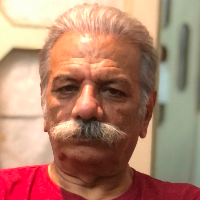Comparison and analysis of women’s language in eight tales taken from Ferdowsi’s Shahnameh and Moulana’s Masnavi
Ferdowsi’s Shahnameh and Moulana’s Masnavi are among the most influential works in Persian literature. Having narrative structure they could well be compared with one another. Bakhtin, Russian theorist introduces the concept of multilingualism in the domain of narrative as a substructure of polyphony, however does not include epic and poetic meter in this category. The main question of this research is that if there were linguistic layers in these two versified narrative works, to what extent each employed polyphony and what had been the impact of this feature on the two works. The study of women’s language in the above tales seen from the perspective of polyphony show that although some of Bakhtin’s linguistic genres are found in women’s certain language, however women in Shahnameh share this characteristic far more than their Masnavi counterparts, and therefore Ferdowsi had surpassed Moulana in employing polyphony for characterization of women in the tales. Moreover, this study further differentiates between the outlook of these two great poets regarding women and the origin of the tales. In Shahnameh women are dialogue orientated whereas in Masnavi they mostly remain silent.
-
A comparative study of imagery in the broken poems of Qajar and Mahmoudsami Al-Baroudi
Nader Eftekharzadeh, Abdolhosein Farzad *, Farideh Mohseni Hanjani
Journal of Contemporary Literature, -
Reflecting the socio-political conditions of Tunisian and Iranian Muslims in the poems of Abolqasem al-Shabi and Mirzadeh Eshghi and explaining its geopolitical dimensions.
Mohammadehsan Rahmani, Zahra Khosravi *,
Quarterly of Geography (Regional Planing),


